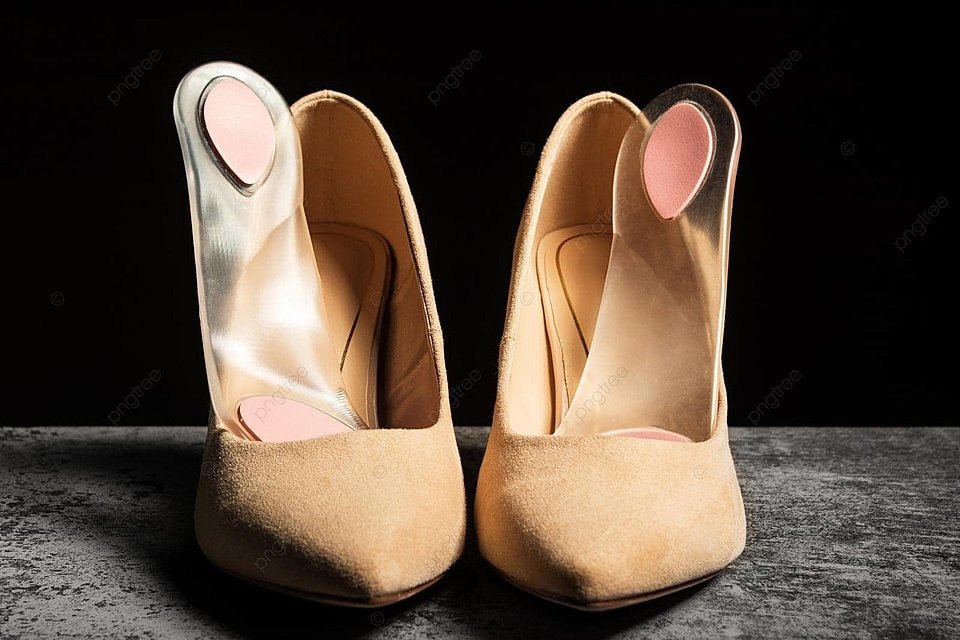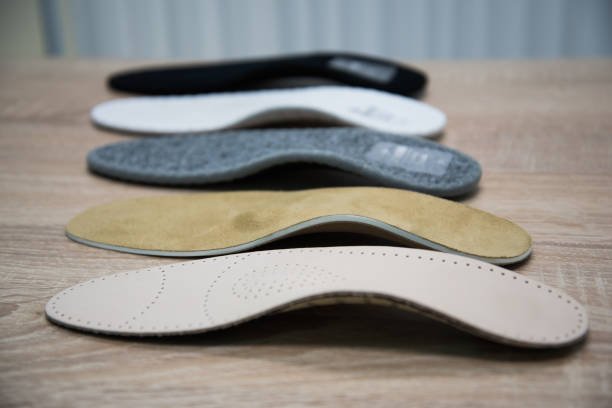Many women own at least one pair of high heels since they exude elegance and add to self-confidence, not to mention edginess, like how they wear them upside down in pole dancing. But if you wear them, it’s comfortable and foot-friendly. That was before insoles for high heels came along, which means good news to those who regularly wear their lovely high-heeled shoes and need a little relief. This complete guide will take you through all the must-know insoles for high heels, from their benefits and types to how to select and wear them comfortably and in style.

Why Are High Heels So Be Painful
The Dangers of High Heels Before going over what insoles can offer, it is important to note why some believe high heels are uncomfortable and bad for health. Here are some key reasons:
Lack of Arch Support:
High heels are an example of unforgiving shoes that offer little to no arch support. It can often cause the wearer to overpronate or supinate, resulting in foot/ankle problems.
Toe Cramping:
The narrow toe box on many high heels can force your toes to smash together with every step, leading to cramping, blisters, or even long-term problems like bunions.
Instability:
Stilettos, particularly high heels, are unstable. High heels can cause ankle sprains and other injuries at risk.
Impact on Posture:
High heels may influence how you walk, which can cause early reminders of back, knee, and hip pain.
10 Advantages of High Heel Insoles

A good insole produced especially for high heels can help you out with these problems, as it will give support and comfort right there where needed. Here are some key benefits:
Cushioning:
An insole provides a little extra cushion, lessening the pressure on your metatarsal heads and increasing your comfort.
Arch Support:
Most high-heel insoles have an arch design that aligns your feet to the correct alignment and reduces the risk of foot pain injuries.
Stability:
Insoles boost the fit with your high heels which makes them more solid and less difficult to walk in as they cut down on slippage or insecure position and twisting feet.
Toe Relief:
Insoles can be made to add additional space in the toe box, taking away any squeezing or cramping.
Shock Absorption:
Cushioned footbed: Heeled shoe insoles can include different types of comfortable inserts that will cushion and absorb the shock your feet endure from every step on hard floors.
Improved Posture:
Insoles give you enhanced support and alignment that, by better positioning your body, improves posture and takes pressure off the back, hips & knees.
Type of High Heel Insoles
Many insoles are available that are made specifically for high heels, addressing multiple needs and preferences.
Full-Length Insoles:
The insoles run the entire shank length, giving support and cushioning to all parts of your feet. Because they’re designed for high heels, leaving ample space for the extra material.
3/4-Length Insoles:
They span the entirety of your insoles, from right behind your toes to back near where you would find our heels, which provide solid arch and heel support without crowding out that toe box. They can be used with narrow-front shoes and high heels.
Gel Cushions:
Gel Cushions: Gel cushions are small, unobtrusive insoles that provide cushioned support to specific regions of the foot like the ball or heel areas. These will be great to add a little extra padding without altering the way your shoes fit.
Metatarsal Pads:
You place These pads under the ball of your foot to help relieve pressure and pain close to the metatarsal region. They are perfect for stilettos and any other high heel with a tight front.
Heel Grips:
Heel grips stop your foot from directly coming out of the shoe. In addition, they add more padding to the heel section to prevent blisters and irritation.
5 Tips for Buying the Correct Insoles for High Heels
There are a few things you can think of when finding insoles for your high shoes:
Foot Type:
Determine your foot type—flat feet, high arches, or a neutral arch—so that your inserts will provide the correct support.
Heel Height:
Be realistic with your heel height. Logically, the higher a heel is, the more padding and support are needed to offset the added stress on the ball of your foot.
Shoe Fit:
Make sure the shoes have insoles sufficient. Complete insoles may be too bulky for some high heels, while 3/4-length insoles or gel cushions might make more sense.
Material:
Opt for high-standard materials that provide sturdiness and ease. Many types of insoles exist on the market currently, and examples include gel, foam, as well as leather-based high heel insole.
Specific Needs:
If you’ve particular foot problems, such as plantar fasciitis or bunions, then go for insoles that target these issues.
Brand and Reviews:
List the brands and prepare to inspect them (Get user reviews of course) wherever possible, choose your insoles that would help you with similar kinds of problems.
Recommendations for Better High-Heel Comfort
Insoles alone can’t give you the comfort that wearing high heels can provide, but there are various ways in addition to gain such consequences;
Break Them In:
Give your new high-heels a walk around the house for short intervals[just before putting them on stretch out].
Alternate Shoes:
High heels aren’t to be worn daily Swap with any other comfortable shoes for a while to ease up your feet.
Stretching Exercises:
Do regular foot and calf stretch exercises to help release strain and keep the pain at bay.
Correct Size:
Your high heels must fit. This brings us to Tip #1 – Never wear tight or loose shoes because either wearing them can result in great discomfort and independence foot problems.
Padding:
Try using padding in specific areas of concern, like blister pads or toe protectors to stop friction and rubbing.
Rest Your Feet:
Sit down and rest those feet whenever you can, especially if you have to be on your feet all day!
Taking Care of Your Heels Insoles
Take Care — It is very important to care for your high-heel insoles so that they are effective even after regular usage.
Cleaning:
Clean your insoles as the manufacturer recommends to keep them going strong for longer. This is not true for most gel and foam insoles, which can be wiped down with a damp cloth.
Air Dry:
Wait until they are dry before putting the insoles back into your dress shoes. Do not store in direct sunlight or high temperature.
Replace as needed:
Insoles Break Down Over Time At the moment you see wear, like if they are not as thick as there were before or flatten/less cushioned then it is time to substitute them.
Storage:
When not in use, you can store your insoles somewhere cool and dry to prevent damage from the environment as well.
Conclusion
High-heel insoles should thus be considered a great addition to maintaining comfort even while dressed in high heels. These insoles can provide cushioning, support, and stability that greatly improve your high-heel-wearing experience. Whether you are running errands, hitting the dance floor into the late hours of the night, or just want to rock those pretty shoes all day pain-free with a pair of good shoe insoles.
When trying to find the best insoles, it is very important to fit a solution that fits your foot type, the types of shoes you own, and support and cushioning levels. You can walk out feeling comfortable and confident, letting your high heels do the talking for you with appropriate care and wear strategies. Experience the chic joy of high heels combined with proper insoles and enjoy the best of both worlds.


